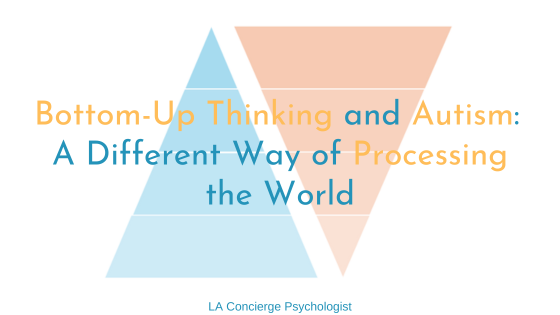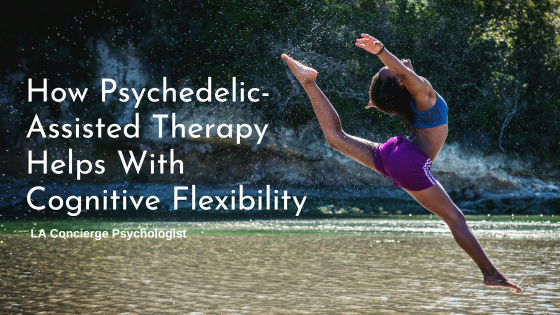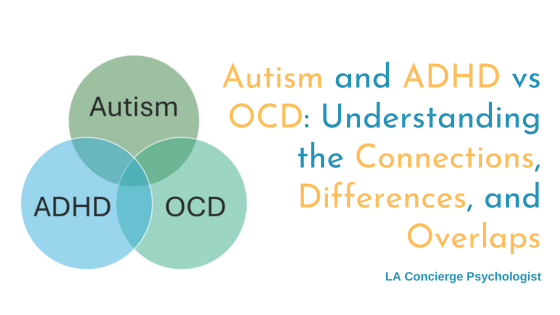Recent research suggests a significant overlap between Attention Deficit Hyperactivity Disorder (ADHD) and autism. Studies indicate that 50 to 70%[1] of individuals with autism also meet the criteria for ADHD, and two-thirds of ADHDers may also have autism[2]. However, it’s only relatively recently that a dual diagnosis (often referred to as AuDHD) has even been possible. Prior to 2013, being diagnosed with ADHD precluded an autism diagnosis and vice versa. The two conditions are still often treated separately, even with the high likelihood of their co-occurrence
Because traits of ADHD and autism can conflict, the experience of having both often defies common notions of the two conditions. Many people may suspect they are neurodivergent in some way but don’t fully relate to one diagnosis. For example, the autistic desire for predictability and the ADHD craving for novelty can create internal conflict and confusion. This tug-of-war between the traits of the two conditions can even prevent someone from seeing or understanding the root of their own experiences. Often, it can feel like missing a crucial piece of the puzzle, and life can feel even more challenging. This is where an AuDHD (co-occurring ADHD and autism) diagnosis and guidance that supports this specific experience could be the answer.
Having both an ADHD and autism neurotype can be both a challenge and an asset, as AuDHDers are often creative and determined individuals who offer a unique perspective to the world. This article delves into the various aspects of AuDHD and how your experience might be different from someone who is only autistic or an ADHDer.
Autism and ADHD Have Some Overlaps
Though autism and ADHD are distinct neurotypes, they have certain things in common, which can sometimes lead to confusion in diagnosis and treatment. Understanding where those overlaps occur is crucial for accurately assessing either condition and identifying when someone actually has both.
These are some of the shared characteristics of ADHD and autism:
Executive Function
Both ADHD and autism can cause difficulties with executive function, which can mean struggling with organization, planning, and time management. People with either condition may find initiating and sustaining tasks, such as completing assignments or following through on commitments, challenging. Additionally, difficulties regulating attention and maintaining focus are common in both neurotypes, though for different reasons. While ADHDers may struggle due to heightened distractibility and impulsivity, an autistic person may face challenges in transitions or maintaining interest in social interactions.
Social Difficulties
While social struggles are usually associated with autism, ADHDers can also encounter challenges in understanding social cues, maintaining reciprocal conversations, or appropriately modulating their behaviors in social contexts. Though not all autistic and ADHD individuals will experience social awkwardness, both conditions can manifest in perceived awkward or out-of-the-norm social interactions. This can lead to misunderstandings or feelings of isolation. Experiencing social anxiety is common among neurodivergent people.
Sensory Sensitivities
Both ADHDers and autistic people can experience heightened reactivity to sensory stimuli; though, they can manifest in different ways. Noise or unpleasant sensations can impact an ADHDer’s ability to concentrate or remain calm. Autistic people may react more intensely or specifically to stimuli, leading to sensory overload or avoidant behaviors in certain environments. Additionally, autistic people generally have more sensitivities than ADHDers, occurring across more senses and a higher number of sensitivities within a sense.
Co-occurring conditions, such as anxiety or depression, are common with both conditions, which can further exacerbate symptoms, impact daily functioning, and make diagnosis difficult.
Though ADHD and autism are very different, there are some significant overlaps, and people with either neurotype can share some of the same struggles. If someone has AuDHD, they will experience these struggles and unique AuDHD experiences, which can manifest in surprising ways.
Some Unique Signs of AuDHD (Co-Occurring Autism and ADHD)
Life with both ADHD and autism can be a difficult balancing act; solutions that can help with ADHD can exacerbate autistic characteristics and vice versa. This can feel like a constant push and pull between managing the two, leading to frustration, exhaustion, and even burnout.
On the other hand, people can find that the two conditions can sometimes balance each other out, making some aspects of each neurotype easier to manage. The fact that both conditions coexist means living with AuDHD can look very different from living with only ADHD or only autism, so it can be challenging to diagnose.
Here are some unique characteristics of living with AuDHD and what it can feel like for some people.
1) Craving change and novelty, but also finding change overwhelming and anxiety-inducing
Feeling restless and under-stimulated is common for ADHDers. This can be a frustrating and painful experience that makes focusing feel impossible. It usually results in dopamine-seeking quick fixes like spending money or impulsively booking a trip.
AuDHDers also seek dopamine and novelty but often temper those behaviors to suit the needs of their autistic sensitivities. They will typically look for new ways to do a routine in order to work novelty into their day, but may also stick to a familiar process when trying something new. For example, they may try a different snack every day while always having a snack at the same time; and they may also manage the potential overwhelm of going to an unfamiliar restaurant by ordering a familiar dish.
The ADHD craving for novelty can also mean bigger changes, such as deciding to move cities or go back to school. When autism co-occurs, this behavior can become very quickly overwhelming. Managing the change is suddenly draining, and the new environment potentially overstimulating. This cycle of dopamine-seeking and overwhelm repeats itself and can lead to cancelling commitments and exhaustion.
2) Always developing new routines but struggling to stick to them
Autistic people thrive on routine: deviating from that routine can be uncomfortable and require some planning. ADHDers, conversely, can find routines difficult to stick to long-term; though, they may be fine in the short term. When someone is living with AuDHD, they most likely crave routine and find sticking to a routine very helpful but will fall out of those routines easily. So they may find they make many helpful routines that work in the short term but don’t last very long. Returning to square one can be tiring for a long time, especially if that routine is integral to managing daily life, such as a busy work schedule.
3) Living in a chaotic environment but being hyper-organized in other ways
Whether it’s executive dysfunction or being exhausted after a busy day living in a neurotypical world, both autistic people and ADHDers can struggle to keep up with chores. People with AuDHD will often be very organized in some aspects of their life and find it easy to keep up with some tasks, but other parts of their life can be chaotic. For example, people with AuDHD may not struggle to be up on time because being late makes them anxious but may struggle with time-keeping in other aspects of their life. They may be able to manage important dates and work schedules but forget very simple things in their daily lives. This can lead to intense feelings of frustration and low self-esteem.
It can be difficult to understand why you can keep on top of some things, but not others. The truth is that many aspects of daily life take a lot more energy for AuDHDers than neurotypical people. Even if there are areas where they are especially organized, it may not translate to all areas of their lives.
4) Having both long-term special interests and frequently changing interests
People with AuDHD may find that they have a special relationship with their interests that fall somewhere in between autism and ADHD. Whereas ADHDers may cycle through interests and become hyper-fixated for a distinct amount of time, autistic people tend to have very intense interests that last long periods of time. AuDHDers may experience both long-term autistic special interests and briefer hyper-fixations simultaneously. This can be very fulfilling but also frustrating when there’s not enough time to dedicate to multiple hobbies on a deeper level.
5) Regularly burning out from being too busy and overwhelmed socially but struggling to slow down to recharge
Managing energy levels can be tough for AuDHDers. People with either diagnosis are prone to burnout, but often, the need to satisfy the dopamine cravings of ADHD can be a fast track to exhaustion when someone also has autism. Having a busy social calendar may feel great in the moment, but not taking adequate time to recharge afterward can become a problem, especially when those activities are sensory overwhelming.
6) Finding the structure of a school or work environment helpful but struggling with collective spaces
School and the workplace can be difficult for AuDHDers to manage because it requires balancing two opposing factors: novelty and routine. Having a structured daily routine can be helpful with time management, and the familiarity can be comforting, but the repetitive nature can quickly become boring. Striking the right balance between anchoring repetitive tasks and interesting new projects is key but that isn’t easy to facilitate. Even finding the right work environment can be challenging. Offices and schools can be sensorily overwhelming, but working from home may be impossible or even too lonely for someone with AuDHD.
No Two People with AuDHD Have the Same Experience
The unique and complex intersection of ADHD and autism requires specialized understanding and support to address the different needs of each person. Though people usually seek out and receive a diagnosis of either ADHD or autism at first, it’s not unusual, once they become more familiar with their diagnosis, to notice certain traits or symptoms that don’t entirely fit. This often leads to discovering a secondary diagnosis to explain their experiences more fully.
If you think you may be AuDHD and would like diagnostic clarity, learn more about our adult autism assessments (which consider co-occurring ADHD as part of the assessment process). If you are an AuDHDer and are interested in seeing a therapist who specializes in neurodivergent-affirming care at our practice, you can send us a message or book a free 20 minute consultation call with Dr. Barajas or Dr. Goldman.



